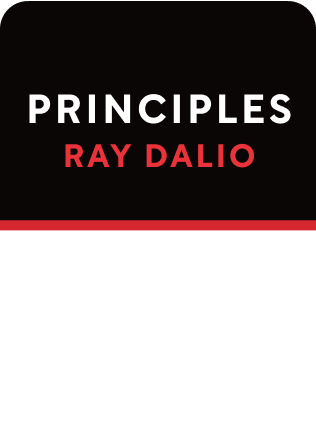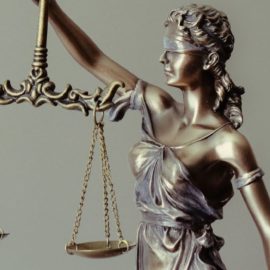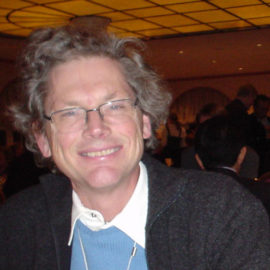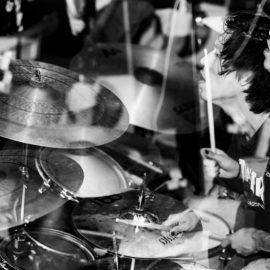

This article is an excerpt from the Shortform summary of "Principles: Life and Work" by Ray Dalio. Shortform has the world's best summaries of books you should be reading.
Like this article? Sign up for a free trial here .
Who is Ray Dalio? What are his Principles for Life and Work, and how did he developed them?
Ray Dalio is the founder of the hedge fund company Bridgewater. Dalio developed his principles based on his experience running Bridewater and other business ventures.
Keep reading to find out the answer to the question “who is Ray Dalio?” and all about his early life and early days at Bridgewater.
Who is Ray Dalio?
Who is Ray Dalio? First, read about Ray Dalio’s background and then learn about his early career and later involvement at the famed firm, Bridgewater.
So who is Ray Dalio? He is a New York native. Ray Dalio grew up in Long Island as an only child. His father was a jazz musician and his mother was a stay-at-home mom.
He describes his early character traits:
- He had a bad memory and disliked rote memorization.
- He didn’t like following instructions.
- He was very curious.
- He liked figuring things out for himself.
As a result, he didn’t like school, since what his teachers were teaching never seemed all that important.
But when he did develop an interest in something, he was unstoppable. He eagerly worked for money starting at age eight, delivering newspapers, shoveling snow, caddying at a golf club, and working in a restaurant. He found that independently handling money taught him far more useful lessons than school did.
In the 1960s when he grew up, the United States was on a tear. Everything seemed to be improving, and ambitious goals like space travel rallied the nation.
Importantly for Dalio’s life trajectory, the stock market was doing great, quadrupling over the previous ten years. After hearing people talk about buying stocks at the golf course he was caddying at, Dalio bought shares of Northeast Airlines because it was the only company he found that sold for less than $5 a share. He bought as many shares as he could, figuring that more shares would earn him more money. In retrospect, this was a dumb strategy, but he got lucky—he tripled his money. He thought making money investing was easy, and he got hooked on the stock market.
He started getting as many annual reports from public companies as he could and digging into them. Like many others, he tried to pick the best stocks to get the best returns. His early involvement in the stock market helped formulate the answer to the question “who is Ray Dalio?”
1966 would be the stock market’s top. He would soon learn a lot of lessons about financial markets.
College and Starting Bridgewater: 1967-1979
Dalio had a C average in high school and attended a local college, C.W. Post. But he enjoyed college since he could study things that he was actually interested in. He majored in finance and graduated in 1971 with nearly perfect grades, which got him into Harvard Business School.
History Repeats Itself
During this time, the United States faced social turmoil with the Vietnam War, and economic turmoil with a declining stock market and currency fluctuations. By watching the news and the market, Dalio began sensing a bigger picture and the cause-effect relationships that determine how the market moves.
For example, the summer after Dalio graduated from college, President Nixon announced that the US dollar would no longer be convertible into gold, which caused the dollar to plummet. But the next day, the stock market jumped by 4%. Dalio was confused. He spent the rest of the summer studying currency devaluations and found that this pattern had occurred in history—just not in his lifetime. There was a predictable string of cause-effect relationships that made this outcome very predictable.
As another example, in 1973, the US economy slowed, the stock market sank, and commodity prices shot up. While this was confusing at the time, in retrospect, there was a logical sequence of events:
- The Fed overspent in the 1960s, financed by debt with easy-credit policies.
- When the US paid back its debts with lower-value paper money instead of gold-backed money, the US basically defaulted, and the dollar took a dive in value.
- This created more easy credit, which led to more spending, which led to inflation. This pushed commodity prices up.
- Then, in 1973, the Fed tried to control inflation by tightening monetary policy. This then caused stocks to crash and the economy to weaken.
Even though a modern event might seem novel, it has likely happened in the past, as a result of logical cause-effect relationships. Dalio committed to studying history broadly so he could become aware of more situations and how to deal with them, even if he had personally never seen them before. His goal became to be able to identify what situation he was in, to understand the relationships behind them, then to predict what would happen in the future.
Dalio Escalates His Trading
While at Harvard Business School, Dalio took an interest in trading commodities. Unlike stocks, which could stay high or low because of public perception and trading with a “greater fool,” commodities like meat and grain represented real things that people would pay for at a grocery counter. This allowed Dalio to model the cause-effect relationships in the whole system, from how rain affects crop yield, to how much grain livestock eat, to what cuts of meat consumers prefer to eat. To Dalio, this looked like a “beautiful machine” that he could model and predict prices of.
After graduating with his MBA, Dalio worked as a commodities trader in a brokerage firm while also trading his own account. Today, he remembers his trading mistakes far more vividly than his wins. At one point, he had a big loss on pork bellies, which plummeted in value for a few days. He would hear the commodity price ticker click and clack, announcing he’d just lost another sum of money. This visceral experience taught him a healthy fear of being wrong, and the caution to cap his losses to avoid being taken out of the game.
Dalio was fired from his brokerage firm for being too wild (he shares that he once punched his boss in the face). But his old clients still wanted his advice, so in 1975 he started Bridgewater Associates. Today when people ask “who is Ray Dalio?” the answer has something to do with Bridgewater.
Bridgewater’s service began by advising customers on how to handle market risks.
- Notably, he helped the chicken producer Lane Processing control its feed costs with corn and soybean futures, which allowed them to provide chicken at a fixed price to McDonald’s. This reduced price risk for McDonald’s, which allowed them to launch the McNugget in 1983.
- He also began publishing Daily Observations, a collection of his thoughts and research.
Eventually, Bridgewater also began to buy and sell on his clients’ behalf, earning a percentage of profits. Dalio’s ability to visualize the market as a complex machine gave him a competitive advantage over other firms who didn’t. So now when someone asks, “who is Ray Dalio?” you’ll have a complete answer from his early life to career achievements.

———End of Preview———
Like what you just read? Read the rest of the world's best summary of Ray Dalio's "Principles: Life and Work" at Shortform .
Here's what you'll find in our full Principles: Life and Work summary :
- How Ray Dalio lost it all on bad bets, then rebounded to build the world's largest hedge fund
- The 5-step process to getting anything you want out of life
- Why getting the best results means being relentlessly honest with everyone you work with






